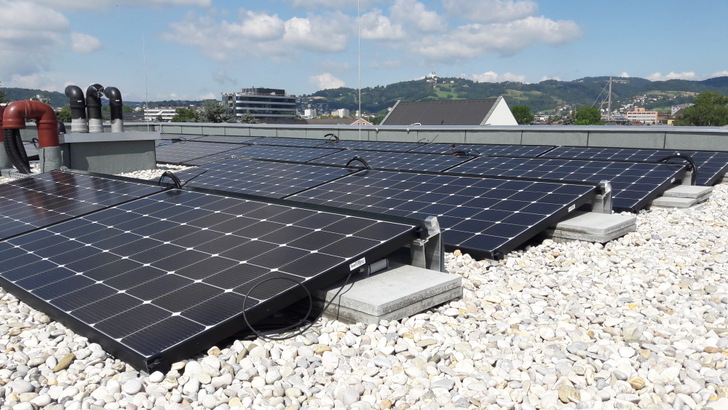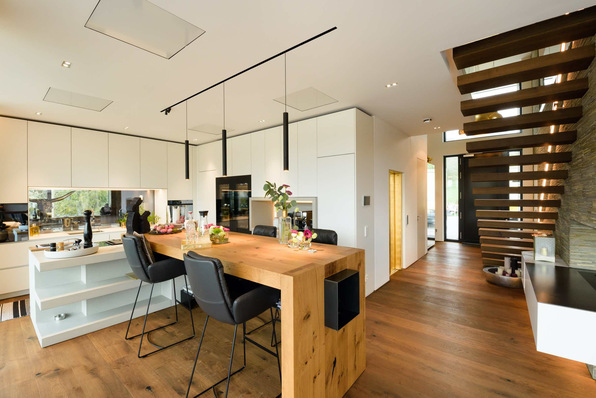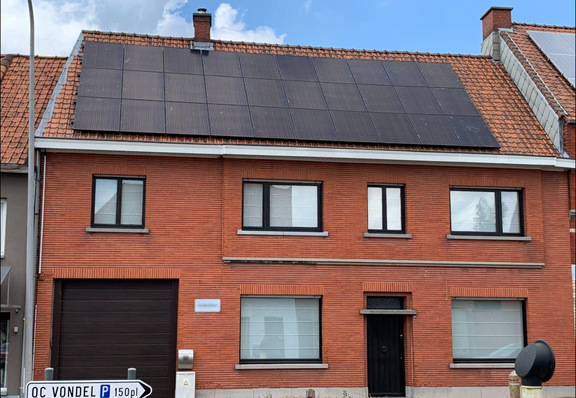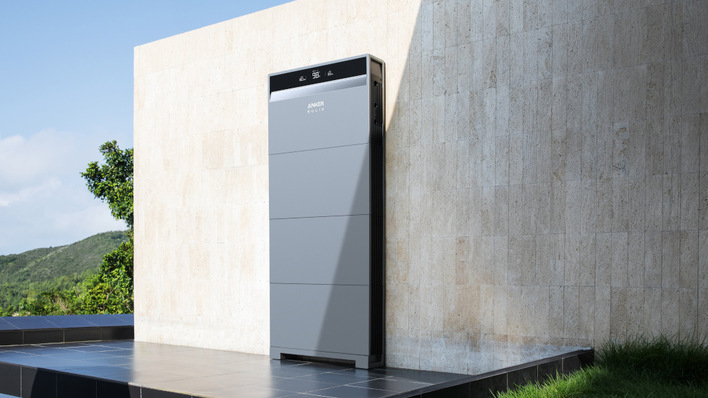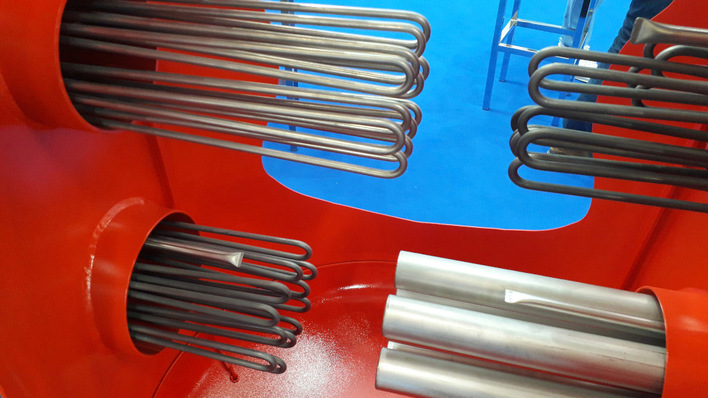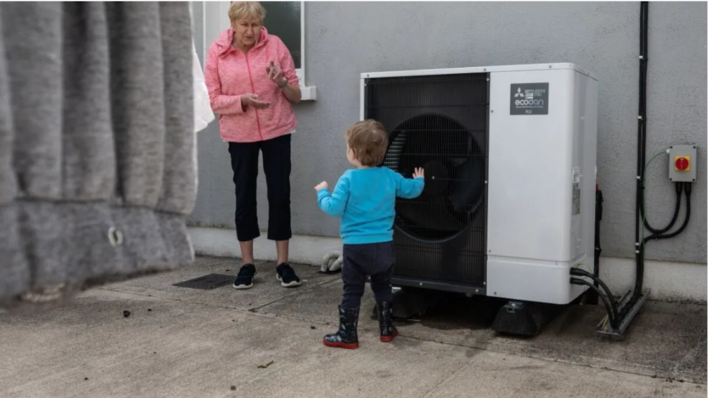After several housing projects in Styria were equipped with photovoltaic water heating by My-PV, the time has come to start a project in the region Upper Austria.
In addition, to demonstrate the technical feasibility, the aim was to offer housing cooperatives, building developers and sponsors a simple, cost-effective and ecological alternative to conventional solar thermal energy for the future.
In 2019, in the harbour district of Linz, an apartment building with 14 residential units was equipped. The housing cooperative deliberately opted for a grid-autonomous direct current variant, in which solar power is used exclusively for water heating.
Moreover, we have developed, installed and operated an independent system for monitoring and measuring data acquisition. The monitoring of the system was carried out independently by the University of Applied Sciences Upper, Austria with their respective instruments. The purpose of this accompanying measurement was to have the findings and statements verified by independent experts. Small spoiler in advance: The University of Applied Sciences Upper Austria has confirmed the accuracy of our statements.
Benefits of PV electricity for hot water preparation
The use of PV electricity for water heating is a current topic, but one that has grown very rapidly in recent years. From a technical point of view, our approach "cables instead of pipes" offers a rich list of advantages, especially in comparison to traditional solar thermal systems:
- 90 % less copper
- No pipes, pumps, valves, expansion vessels, anti-freeze
- No maintenance
- Photovoltaic modules work more efficiently
- Clean solar energy is only converted into heat at the place of hot water demand
- This way, heat loss from pipelines is eliminated and the installation effort for wiring is comparatively low.
Despite all the advantages, this concept has not yet been widely adopted. The state of the art is still a central heat source, often supported by solar thermal energy.
Avoidance of pipeline losses
Such energy losses do not exist in the housing project in the Linz harbour district. For the water supply, only cold water pipes were laid to the boilers in the apartments. There are no circulation or distribution losses. Employing an energy meter, it is continuously determined how much energy comes from photovoltaics and how much is obtained as a backup power from the public power grid. The ratio of these two variables results in the so-called hot water self-sufficiency level or solar hot water coverage rate.
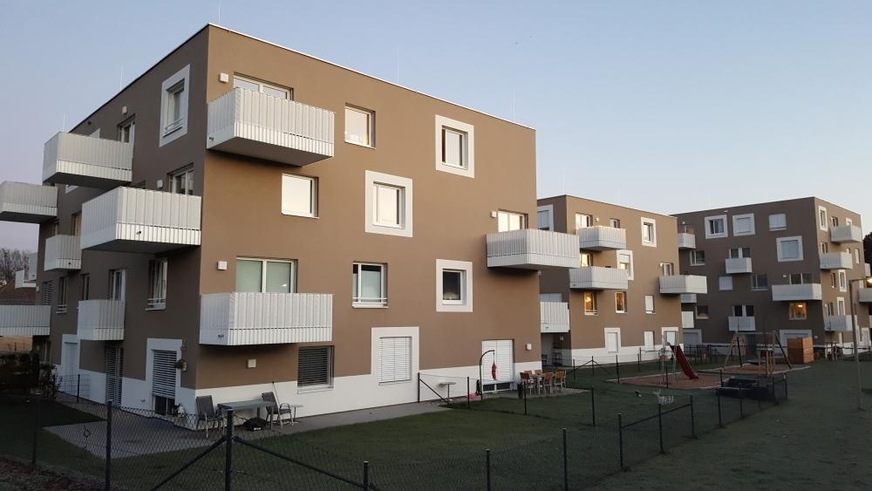
My-PV
Constant drinking water hygiene
Small decentralised hot water storage tanks - such as the above-mentioned boilers - are excluded from the hygiene-relevant standards in residential construction. The so-called thermal disinfection of the drinking water is not required. On the one hand, this reduces the planning and material costs in the implementation phase, and on the other hand, it also reduces the energy requirements in a subsequent operation.
Drinking water hygiene is guaranteed at all times. Where there is no warm water flowing in the circuit, no harmful germs can form.
Change in behaviour of residents
However, decentralised water heating also refines ecological user behaviour. Having one's own "supply" in the apartment encourages residents to act more economical. As in one's own house, one is a "master of one's hot water supply" and can easily change the solar coverage ratio for the better through one's behaviour.
Project description
There is a separate, non-grid-connected photovoltaic system for each of the 14 residential units, each with 1.36 KWp (four 340 Wp modules). The solar power from these systems is exclusively supplied to the "ELWA" water heating devices. These devices are installed in the individual apartments in the 150-litre boilers.
During the day, direct current is thus transported from the PV modules to ELWA, which heats the hot water in the storage tank. On days with low solar radiation, additional household electricity is obtained if required. This way, a hot water supply can be ensured at all times with ELWA. An inverter is not required for this type of PV system, since the electricity is not fed into the grid. This also eliminates the need for any connection permits and greatly simplifies installation.
In this project, the hot water preparation is completely separated from the heating of the building. As a result, the residential property does not require any pipe-bound heat distribution for heating water. In addition to the heating connection, there is only one supply line for cold water per apartment. Solar energy is only converted into heat where it is needed.
Optimization of operations for hot water with photovoltaics
Our initial recommendation was to set the backup boost temperature to 50°C. At this value, all individual needs of the residents are usually met. However, in this case, the residents agreed on a temperature of 60 °C.
Positive results of the temperature adjustment
This optimisation delivered the expected effect: In the two bar charts below, the operating years 2020 and 2021 are directly compared. The blue bars show the amounts of energy delivered by the 14 ELWA units, whereby this amount is always made up of the photovoltaic energy share (green) and the grid purchase (grey). The ratio of these energies is referred to as the solar hot water coverage ratio. This is illustrated by the dark grey line and calculated as follows:
Since the changeover, this figure improved by a range of 16 to 26 percentage points every month until the summer, reaching an all-time high of 81 % in July 2021.
In the annual analysis, the solar hot water coverage in 2020 was only 37% due to the high hot water securing temperature of 60 °C. In 2021 (with an observation period from January to November), however, the value is already 50%, even though the securing temperature was not reduced until the end of March 2021. (hcn)
Did you miss that? My-PV's company building is already self-sufficient in terms of energy consumption


